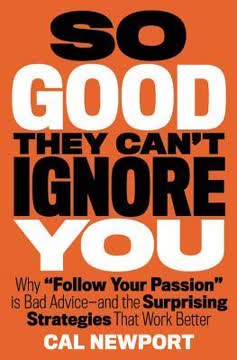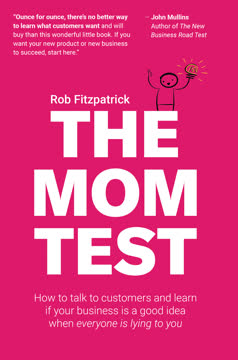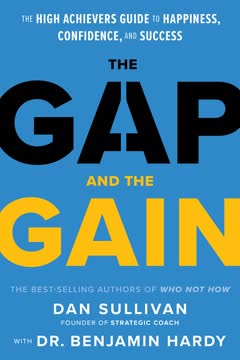Key Takeaways
1. Storytelling is the most powerful tool for inspiring change and connection
The most powerful person in the world is the storyteller. The storyteller sets the vision, values, and agenda of an entire generation that is to come.
Stories shape our world. Throughout history, storytelling has been the primary means of communicating ideas, values, and visions for the future. From ancient myths to modern marketing campaigns, stories have the power to inspire, educate, and motivate people to action.
Storytelling in business. In the business world, storytelling is an essential skill for leaders, salespeople, and marketers. A well-crafted story can:
- Communicate complex ideas in a memorable way
- Build emotional connections with customers and employees
- Inspire teams to work towards a common goal
- Differentiate a brand in a crowded marketplace
The science of storytelling. Research has shown that stories activate multiple areas of the brain, including those responsible for sensory processing, emotions, and memory formation. This neurological engagement makes stories far more impactful than dry facts or data alone.
2. A great hook captures attention in eight seconds or less
You have eight seconds to convince people that you've got something worth hearing about before they zone out, tune out, or check out.
The importance of first impressions. In today's fast-paced, information-saturated world, capturing attention quickly is crucial. A strong hook:
- Piques curiosity
- Creates emotional engagement
- Sets the tone for the rest of the story
Elements of an effective hook:
- Unusual or unexpected information
- A compelling question
- A vivid sensory detail
- A provocative statement
- A relatable human moment
Practice and refine. Developing a great hook takes time and practice. Experiment with different approaches and test them on various audiences to find what works best for your story and message.
3. Character transformation drives emotional engagement in stories
We crave stories because they give voice to the things we want and believe in. We express our desires and our fears through storytelling.
The power of change. Stories that resonate most deeply with audiences often feature characters who undergo significant transformation. This change:
- Creates emotional investment
- Mirrors the audience's own desires for growth and improvement
- Provides hope and inspiration
Key elements of character transformation:
- A clear starting point (flaws, limitations, or challenges)
- Obstacles and conflicts that force growth
- Internal and external changes
- A meaningful resolution that demonstrates the impact of the transformation
Apply to business storytelling. In business contexts, character transformation can be used to:
- Showcase customer success stories
- Illustrate company growth and evolution
- Demonstrate the impact of products or services on people's lives
4. Universal themes and audience understanding are crucial for effective storytelling
To connect with a broad audience, you must use universal themes that relate to fear and desire.
Universal themes resonate across cultures. By tapping into fundamental human experiences and emotions, stories can connect with diverse audiences. Common universal themes include:
- Love and belonging
- Safety and security
- Freedom and spontaneity
- Power and responsibility
- Fun and playfulness
- Awareness and understanding
Know your audience. While universal themes are important, understanding the specific needs, desires, and pain points of your target audience is equally crucial. This knowledge allows you to:
- Tailor your story's details and examples
- Choose the most relevant universal themes
- Address specific concerns or objections
Research and empathy. Develop a deep understanding of your audience through:
- Market research and data analysis
- Direct interactions and conversations
- Observation and immersion in their world
- Creating detailed audience personas
5. Authenticity and vulnerability create the strongest connections with audiences
Be honest. Share your own experiences, not just your successes but your struggles and failures as well. It can be difficult, but vulnerability is the heart of storytelling.
The power of authenticity. In a world filled with polished marketing messages, authentic stories stand out. Authenticity:
- Builds trust and credibility
- Creates emotional resonance
- Makes messages more memorable and impactful
Embracing vulnerability. Sharing personal struggles and failures:
- Humanizes individuals and brands
- Demonstrates resilience and growth
- Inspires others to overcome their own challenges
Balancing vulnerability and professionalism. While authenticity is important, it's crucial to maintain appropriate boundaries in professional contexts. Focus on sharing experiences that:
- Are relevant to your message or goal
- Demonstrate personal growth or learning
- Offer valuable insights or lessons for your audience
6. Story structure provides a framework for compelling narratives
Whether you are creating a ninety-minute film or a thirty-second sales pitch, you need to have a set up, build, and payoff.
The power of structure. A well-structured story:
- Engages the audience from beginning to end
- Creates a sense of momentum and anticipation
- Delivers a satisfying resolution
Key elements of story structure:
- Setup: Introduce the characters and setting
- Inciting incident: Present a problem or challenge
- Rising action: Escalate conflicts and obstacles
- Crisis: Force the protagonist to make a crucial decision
- Climax: Reach the peak of tension and drama
- Resolution: Provide closure and reveal the consequences of the journey
Adapt structure to different formats. While the basic principles of story structure remain consistent, they can be adapted to various contexts:
- Short-form content (ads, social media posts)
- Presentations and pitches
- Long-form content (books, films, campaigns)
7. Heroes and supporting characters bring stories to life
People read, watch, and tell stories not because they are enthralled with the story structure, but because they are invested in what will happen to the characters in the story. This is the emotional juice that fuels a story.
The importance of relatable characters. Well-developed characters:
- Create emotional investment
- Drive the plot forward
- Embody key themes and messages
Types of characters in storytelling:
- Hero/Protagonist: The main character facing challenges and undergoing transformation
- Mentor: Provides guidance and wisdom to the hero
- Allies: Support the hero on their journey
- Antagonist: Creates obstacles and conflict for the hero
- Trickster: Adds humor and challenges the status quo
Applying character archetypes to business storytelling:
- Cast customers as the hero of your brand story
- Position your company or product as the mentor or ally
- Identify common challenges or competitors as the antagonist
8. Creativity thrives in environments that encourage play and risk-taking
People are most creative and innovative when they are surrounded by things that make them happy.
Creating a culture of creativity. Foster an environment that:
- Encourages experimentation and risk-taking
- Celebrates both successes and failures as learning opportunities
- Provides time and space for play and exploration
Physical environment matters. Design workspaces that:
- Facilitate collaboration and spontaneous interactions
- Allow for personalization and self-expression
- Incorporate elements of fun and inspiration
Eliminate fear of failure. To promote innovation:
- Reward calculated risk-taking
- Emphasize learning from mistakes
- Create psychological safety for sharing ideas
Encourage diverse perspectives. Foster creativity by:
- Building diverse teams with varied backgrounds and expertise
- Encouraging respectful debate and challenging of ideas
- Providing opportunities for cross-functional collaboration
Last updated:
Similar Books










Download PDF
Download EPUB
.epub digital book format is ideal for reading ebooks on phones, tablets, and e-readers.





